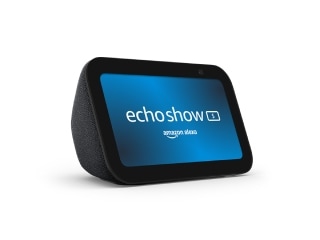- Home
- Laptops
- Laptops Reviews
- Kingston KC3000 PCIe 4.0 NVMe SSD (2TB) Review: A New Breed of Speed
Kingston KC3000 PCIe 4.0 NVMe SSD (2TB) Review: A New Breed of Speed
With twice the bandwidth comes twice the raw performance.

The Kingston KC3000 NVMe SSD (2TB) costs Rs. 33,900 (street price)
How fast do you need your SSD to be? Is there a point beyond which speed won't matter, and should you really be chasing every last drop of performance? In a short time, we've jumped from spinning hard drives to SATA SSDs to the NVMe protocol, and each of these standards has reached a saturation point, beyond which any drive will be bottlenecked. Now, a relatively new breed of SSDs is doubling the potential speed of NVMe thanks to the PCIe 4.0 standard. This has opened up a whole new category in the SSD market, and most brands already have products out that can take advantage of it – if you have compatible hardware, that is.
In stark contrast to its other entry-level offerings, Kingston's new KC3000 SSD is aiming to deliver the absolute highest speeds possible for data transfers. If you regularly load huge game textures, or work with giant video files or 3D models, this might just be the right SSD for you. Of course, this kind of performance comes at a price. Thanks to Intel's latest 12th Gen desktop platform, I was able to review the Kingston KC3000 to its full potential. Read on to see just how much of a difference it could make to your life.
Kingston KC3000 PCIe 4.0 NVMe SSD price in India
Kingston has only recently started selling the KC3000 SSD in India following its global launch last year, and it comes in four capacity options. Street prices do fluctuate, and these figures are accurate at the time of publishing. As explained below, performance varies between capacity options.
The lowest capacity you can get is 512GB, which tells you something about the KC3000's target audience. This version is priced at Rs. 9,400 in India. The 1TB version will cost Rs. 15,200, while the 2TB version that I have for review is selling for Rs. 33,900 online. There's also a flagship 4TB version, but it's priced at a rather unreasonable Rs. 86,800 which is well over double the money. 4TB NVMe SSDs in the M.2 form factor are rare, and it's unlikely that prices will go down for such a niche offering anytime soon.
This SSD will compete with the likes of the WD Black SN850, Seagate Firecuda 530, and Samsung SSD 980 Pro. Prices are competitive by that standard, but still around twice as much as what you'd pay for a mainstream PCIe 3.0 NVMe SSD such as the WD Blue SN570, which I also reviewed recently.
![]()
There's a heat spreader on the top, and regulatory information is printed on the bottom
Kingston KC3000 PCIe 4.0 NVMe SSD specifications and features
The main appeal of a PCIe 4.0 SSD is speed, and Kingston promises sequential reads and writes of 7000MBps – about twice as fast as today's best performing PCIe 3.0 NVMe SSDs. However, these speeds apply only to the 2TB and 4TB variants; the rated sequential read speed remains constant but sequential write targets drop to 6000MBps for the 1TB version and just 3900MBps for the 512GB version. The M.2 slot standard is unchanged gen-on-gen so you can use this SSD with older motherboards; it will simply function at the lower PCIe standard's performance level.
Kingston has chosen the fairly new Phison PS5018-E18 controller and Micron's 176-layer TLC NAND flash for the KC3000. High-end SSDs have their own DRAM for caching, and that capacity ranges from 512MB on the 512GB variant to 4GB on the 4TB variant. Kingston also lists SLC caching on the spec sheet. This means that only one bit is written to each cell of the TLC NAND rather than the usual three bits per cell, to speed up operations when possible, after which the data is consolidated. There's no mention of hardware encryption.
Endurance is rated between 400TBW (Terabytes written) for the 512GB version and 3.2PBW (Petabytes written) at 4TB, which scales proportionately to capacity. That works out to between 219GB and 876GB of writes per day for these capacities during the five-year warranty period.
The Kingston KC3000 comes in a clear plastic bubble pack mounted on a simple sheet of cardboard. There's very little protection, which is surprising for such a premium SSD. The 512GB and 1TB versions are single-sided while the 2TB and 4TB versions have chips on both sides of the M.2 module. The fairly stylish label (unlike the ones on previous models) is printed on a very thin graphene-aluminium strip, which serves as a heat spreader. It won't interfere with the heatsinks that many of today's high-end desktop motherboards have, but you should keep these factors in mind if you want to upgrade a slim laptop.
It's worth noting that the Kingston KC3000 is also physically and technically compatible with the Sony PlayStation 5 (and you can add an adhesive heatsink if needed). If you're looking for an internal storage capacity upgrade, this is an option. Even on Windows PCs, the emerging DirectStorage API allows data such as compressed game assets to be pulled directly from an SSD to a graphics card's memory. This bypasses the CPU and allows for more efficient decompression, allowing games load quicker. This is an example of how PCIe 4.0 bandwidth can come into play.
You can download Kingston's free SSD Manager tool, which includes diagnostics and a secure erase feature, as well as a copy of Acronis True Image HD if you want to clone your previous drive or take backups. Kingston's software looks crude compared to what we've seen from WD and Samsung. As usual, the packaging doesn't make it obvious to buyers that this software is even available.
![]()
The 2TB and 4TB versions have components on both sides, making them about 1.3mm thicker
Kingston KC3000 PCIe 4.0 NVMe SSD performance
Such a premium SSD deserves today's top-end components, and I was able to use Intel's latest 12th Gen ‘Alder Lake' platform to harness the full potential of PCIe 4.0. The test bench consisted of an Intel Core i9-12900K CPU, Asus TUF Gaming Z690-Plus WiFi D4 motherboard, 2x16GB of Corsair Dominator Platinum RGB DDR4-3600 RAM, a Sapphire Nitro+ Radeon RX 590 graphics card, a Corsair RM850 power supply, an Asus Strix LC II 360 AIO cooler, and an Asus PB287Q 4K monitor. Tests were run under Windows 11, and it reported a formatted capacity of 1.86TB for the 2TB KC3000.
Keeping in mind that Kingston sent me the 2TB version for review, which has higher performance ratings than its lower-capcity siblings, let's check the test scores. CrystalDiskMark reported sequential reads and writes at a phenomenal 7091.3MBps and 6773.3 MBps. For the sake of comparison, the recently launched WD Blue SN570, which is a great choice for value-conscious buyers, managed 3495.3MBps and 2997.3MBps respectively. Random reads came in at 2,745MBps and random write speed was 1170.1MBps.
The Anvil storage benchmark reported read and write scores of 9,132.52 and 11,565.5 respectively, for a total of 20,698.02. These numbers mean that the Kingston KC3000 uses the doubled bandwidth of PCIe 4.0 effectively to produce scores around twice as high as those of even the best PCIe 3.0 NVMe SSDs we've tested so far.
![]()
The Kingston KC3000 comes in a surprisingly simple cardboard pack. Seen here with compatible top-end hardware.
Verdict
PCIe 4.0 NVMe SSDs are far more expensive than their PCIe 3.0 counterparts, but the reason is abundantly clear – performance is in a whole new league. The Kingston KC3000 is aimed at those who are building new high-end PCs and want cutting-edge performance. Gamers might enjoy quicker loads between levels, and creative pros might find like loading and saving their work with a little less waiting around. If you're spending huge amounts of money for the latest CPU and motherboard, you'll want an SSD of this calibre to truly harness their power. However, this is beyond the point of diminishing returns for average users. Most people will be perfectly fine with the performance a PCIe 3.0 SSD affords, and it wasn't too long ago that even SATA SSDs were a luxury.
You will of course need a fairly recent AMD or Intel processor and a matching motherboard (or a PlayStation 5) to take advantage of PCIe 4.0 so there isn't much sense in buying such an SSD to upgrade an older PC with. If money is no object, then by all means, go for the best. The Kingston KC3000 is the fastest SSD we've tested yet, but you should also consider competitors from WD and Samsung, and see how their prices compare at the time you make your purchase decision.
Kingston KC3000
Prices (MOP):
512GB: Rs. 9,400
1TB: Rs. 15,200
2TB: Rs. 33,900
4TB: Rs. 86,800
Pros
- Extremely high performance
- Five-year warranty
- Low-profile heat spreader
Cons
- No hardware encryption
- Software could use improvement
Ratings (Out of 5)
- Performance: 5
- Value for Money: 4
- Overall: 4.5
Catch the latest from the Consumer Electronics Show on Gadgets 360, at our CES 2026 hub.
- Samsung Galaxy Unpacked 2025
- ChatGPT
- Redmi Note 14 Pro+
- iPhone 16
- Apple Vision Pro
- Oneplus 12
- OnePlus Nord CE 3 Lite 5G
- iPhone 13
- Xiaomi 14 Pro
- Oppo Find N3
- Tecno Spark Go (2023)
- Realme V30
- Best Phones Under 25000
- Samsung Galaxy S24 Series
- Cryptocurrency
- iQoo 12
- Samsung Galaxy S24 Ultra
- Giottus
- Samsung Galaxy Z Flip 5
- Apple 'Scary Fast'
- Housefull 5
- GoPro Hero 12 Black Review
- Invincible Season 2
- JioGlass
- HD Ready TV
- Laptop Under 50000
- Smartwatch Under 10000
- Latest Mobile Phones
- Compare Phones
- Tecno Spark Go 3
- iQOO Z11 Turbo
- OPPO A6c
- Samsung Galaxy A07 5G
- Vivo Y500i
- OnePlus Turbo 6V
- OnePlus Turbo 6
- Itel Zeno 20 Max
- Lenovo Yoga Slim 7x (2025)
- Lenovo Yoga Slim 7a
- Realme Pad 3
- OPPO Pad Air 5
- Garmin Quatix 8 Pro
- NoiseFit Pro 6R
- Haier H5E Series
- Acerpure Nitro Z Series 100-inch QLED TV
- Asus ROG Ally
- Nintendo Switch Lite
- Haier 1.6 Ton 5 Star Inverter Split AC (HSU19G-MZAID5BN-INV)
- Haier 1.6 Ton 5 Star Inverter Split AC (HSU19G-MZAIM5BN-INV)












